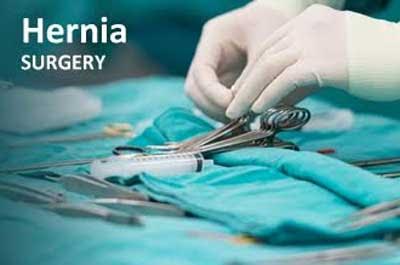- Home
- Editorial
- News
- Practice Guidelines
- Anesthesiology Guidelines
- Cancer Guidelines
- Cardiac Sciences Guidelines
- Critical Care Guidelines
- Dentistry Guidelines
- Dermatology Guidelines
- Diabetes and Endo Guidelines
- Diagnostics Guidelines
- ENT Guidelines
- Featured Practice Guidelines
- Gastroenterology Guidelines
- Geriatrics Guidelines
- Medicine Guidelines
- Nephrology Guidelines
- Neurosciences Guidelines
- Obs and Gynae Guidelines
- Ophthalmology Guidelines
- Orthopaedics Guidelines
- Paediatrics Guidelines
- Psychiatry Guidelines
- Pulmonology Guidelines
- Radiology Guidelines
- Surgery Guidelines
- Urology Guidelines
In high-risk patients prophylactic mesh may prevent Incisional Hernia

Implanting intraperitoneal mesh before closure may prevent an incisional hernia in high-risk patients undergoing open abdominal surgery, according to a study published in the journal JAMA Surgery.
An incisional hernia is a common complication of abdominal surgery that impairs quality of life and body image, can result in incarceration, has a high recurrence rate, and is costly to treat.
Read Also: Inguinal Hernia in men associated with increase in estrogen
Dr. Beldi and associates conducted an open-label randomized trial in 150 patients with a median age of 64.2 years undergoing elective open abdominal surgery from 2011 to 2014. Patients were randomly assigned to prophylactic intra-peritoneal implantation or standard abdominal closure.
A double-layered polypropylene-polyvinylidene fluoride mesh (Dynamesh-IPOM, FEG Textiltechnik) was tailored to overlap lateral and cranial-caudal borders by at least 5 cm. The mesh was placed intraperitoneally and fixed to the abdominal wall using single stitches with polypropylene sutures in all 4 corners. After the initial fixation, the borders of the mesh were fixed to the abdominal wall circumferentially using running polypropylene suture to prevent any intestinal structures to herniate onto the mesh.
Follow-up examinations were performed one and three years post-surgery.
Read Also: Compared to midline,Transverse Incision has lower incidence of Incisional Hernia
The key study findings included are:
- The cumulative incidence of an incisional hernia was 7.2% in the mesh group compared with 18.5% in controls.
- Significantly more patients in the mesh group had abdominal pain at six weeks (65% vs. 44%), but not at 12 or 36 months.
- No difference in surgical site infections was observed, but time to complete healing of such infections was significantly longer in patients with mesh implantation - a median of eight weeks, versus five.
- Further, trunk extension was significantly decreased after mesh implantation compared with controls (mean, 1.73 cm vs. 2.40 cm).
According to Dr. Beldi, the incisional hernia may be prevented by prophylactic mesh implantation but in case of surgical site infection, the wound needs a longer time to heal when compared with patients without mesh implantation.
For reference log on to
https://jamanetwork.com/journals/jamasurgery/article-abstract/2714598

Disclaimer: This site is primarily intended for healthcare professionals. Any content/information on this website does not replace the advice of medical and/or health professionals and should not be construed as medical/diagnostic advice/endorsement or prescription. Use of this site is subject to our terms of use, privacy policy, advertisement policy. © 2020 Minerva Medical Treatment Pvt Ltd